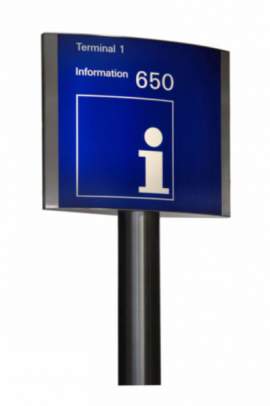
National Institute of Standards and Technology

What is the National Institute of Standards and Technology (NIST)?
Previously known as the National Bureau of Standards, The National Institute of Standards and Technology (NIST) is a measurement standards lab which functions as a non-regulatory agency of the United States Department of Commerce. The organization’s official mission to promote innovative and industrial competitiveness through the advancement of standards, technology and the overall measurement of science in ways that bolster economic security and the general population’s quality of life.
The National Institute of Standards and Technology (NIST) possesses an operating budget of approximately $85 million per year—the agency also receives grants and funding as part of stimulus packages, such as the American Recovery and Reinvestment. The National Institute of Standards and Technology (NIST) employs roughly 3,000 engineers, technicians, scientists, administrative and support personnel. Approximately 1,8000 guest researchers and engineers from American institutions or companies complement The National Institute of Standards and Technology’s (NIST) full-time staff. Additionally, The National Institute of Standards and Technology (NIST) partners with roughly 1,500 manufacturing specialists at nearly 350 affiliated offices around the United States.
History of the National Institute of Standards and Technology (NIST):
From 1830 until the 20th century, the role of overseeing measures and weights was carried out by the Office of Standard Weights and Measures—an office of the United States Treasury Department. This office eventually became the National Bureau of Standards on July 1st of 2901. This organization was later renamed and reorganized into the National Institute of Standards and Technology in 1988.
The National Institute of Standards and Technology (NIST) is currently headquartered in Gaithersburg, Maryland. The agency also operates a full-functioning facility in Boulder, Colorado. Activities of The National Institute of Standards and Technology (NIST) are organized into extramural and laboratory programs. On October 1st of 2010, The National Institute of Standards and Technology (NIST)was reorganized through a reduction of its laboratory units from ten to six. Currently, The National Institute of Standards and Technology’s (NIST) is made up of the following laboratories:
• Information Technology Laboratory
• Engineering Laboratory
• Material Measurement Laboratory
• Center for Nanoscale Science and Technology
• Material Measurement Laboratory
• The National Institute of Standards and Technology (NIST) for Neutron Research
The extramural programs of The National Institute of Standards and Technology (NIST) include the following:
• Technology Innovation Program: a grant program where The National Institute of Standards and Technology (NIST), with its industry partners, share early-stage developments of innovative, but risky, technologies.
• Hollings Manufacturing Extension Partnership: this program is a nationwide network, comprised of centers to assist small and mid-sized manufacturers to retain and create jobs, improve efficiencies and reduce waste through process improvements. This program seeks to increase market penetration through innovation and detailed growth strategies
• The Malcolm Baldrige National Quality Award: This is the nation’s highest award for business performance and general excellence
The National Institute of Standards and Technology’s (NIST) Boulder Laboratories are most widely-known for housing an atomic clock, officially labeled the NISTF-F1. This piece of equipment serves as the source of the United States’ official time.
The National Institute of Standards and Technology (NIST) also operates a neutron science user facility (The NIST Center for Neutron Research). The National Institute of Standards and Technology (NIST) provides scientists access to several neutron scattering instruments, which are utilized in various fields of research, including fuel cells, materials science and biotechnologies.
As part of its general mission, The National Institute of Standards and Technology (NIST) supplies academia, industry, government and other users with over 1,500 Standard Reference Materials. These resources and artifacts are officially certifies as possessing specific characteristics or component content, utilized as calibration standards for measuring procedures and equipment, as well as quality control benchmarks for experimental control samples and industrial processes.
The National Institute of Standards and Technology (NIST) operates with seven standing committees:
• Advisory Committee on Earthquake Hazards Reduction
• Technical Guidelines Development Committee
• Information Security and Privacy Advisory Board
• National Construction Safety Team Advisory Committee
• Baldrige National Quality Program Board of Overseers
• Manufacturing Extension Partnership National Advisory Board
• The Visiting Committee on Advanced Technology
The National Institute of Standards and Technology (NIST) is currently developing a government-wide identification card standards for its federal contractors and employees to prevent unauthorized people from gaining access to federal computer systems and buildings.
The National Institute of Standards and Technology (NIST) played a significant role in the World Trade Center Collapse Investigation. In 2002, the National Construction Safety Team Act gave authority to The National Institute of Standards and Technology (NIST) to conduct a formal investigation into the collapse of the World Trade Towers (buildings 1, 2 and 7). This investigation, which was directed by lead investigator Shyam Sunder, covered three primary aspects, including a fire safety and technical building investigation to inspect the factors that contributed to the probable cause of the collapses of the World Trade Towers and the World Trade center Building 7. The National Institute of Standards and Technology (NIST) also established a research program to provide the technical basis for building and fire codes, practices, standards and a dissemination program to engage leaders of the building and construction community in implementing proposed alterations to pre-applied practices, codes and standards. The National Institute of Standards and Technology (NIST) is currently providing practical tools to better prepare facility contractors, owners, engineers, emergency responders, architects and regulatory authorities to respond to future catastrophes. The investigation aspect of the response plan was finalized with the release of the final report concerning World Trade Center Tower 7 on the 20th of November in 2008. The final report concerning the World Trade Center Towers was formally released on October 26th of 2005.



















